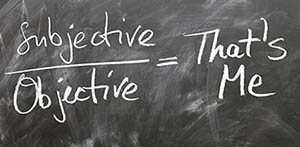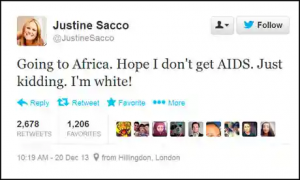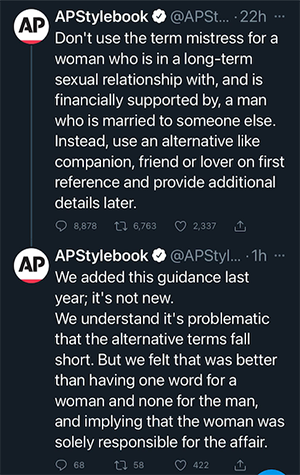13 Diverse Viewpoints
Let’s be honest. This chapter contains sensitive but important content for you to consider. Americans, including federal and state lawmakers and judges, have differing views about the complex and evolving word diversity.
First, we need to acquaint ourselves with some terms and concepts. The following presentation was written by Dr. Meera Kumar, who was a Teaching Assistant Professor in the School Journalism and Strategic Media at the University of Arkansas.
Study the presentation slides by using the forward button or clicking on sections of the control bar.
You can also read the text of this presentation as a PDF:
• Cultural Competence, Diversity, Equity, Inclusion, Belonging (DEIB)
Media professionals have an ethical duty to make audiences and sources feel valued, regardless of demographics. That imperative is the foundation for our emphasis on diversity.
This chapter relies heavily on viewpoints from media professionals who can help us better evaluate the term diversity. It includes case examples that demonstrate the importance of seeking a diverse range of perspectives to avoid inflammatory and divisive situations.
ADVOCACY vs. OBJECTIVITY (revisited)

Consider how the topic of diversity in media returns to a common thread that we’ve studied previously: journalistic tension between advocacy and objectivity, especially for covering issues involving race.
Some media professionals have decided that they can no longer remain objective and idly watch systemic racism and injustice at their jobs and in their communities. They see the status quo of objective journalism as part of the problem. Other media professionals, however, choose to remain objective, fearing that if they advocate for specific social change, they can become biased and lose credibility.
DEFINING RACISM
Khalil Gibran Muhammad, a professor at Harvard, has conducted extensive research on racism. Read the following interview:
• Calling racism what it is: 8 questions for Khalil Gibran Muhammad – The Journalist’s Resource
In the interview, Muhammad noted that “racist ideas are much more ubiquitous in our society than avowed, self-identified racists.” Also, he made an interesting distinction between racism and discrimination:
Discrimination is not always racist by definition. Discrimination can simply mean that someone has used their discretionary power or a sense of discernment to make a decision and, in those cases, journalists may err on the side of caution when attributing racist motivations or defining the act itself as racist. But there are many more cases, in the context of the totality of circumstances and any other evidence of individual motivation, that should be defined as a racist act.
The interview is partly based on a 2019 AP Stylebook changes that suggest in certain instances it is acceptable to label an action as racist:
• AP Stylebook update: It’s OK to call something racist when it’s racist– Associated Press
And here are two succinct summaries of AP Stylebook guidance concerning race:
- Identify people by race only when it is pertinent to the story.
- Strive to represent your community by seeking diversity in the people you quote and depict.
TRAYVON MARTIN
The 2012 case of Trayvon Martin can give us valuable perspective on how a story’s narrative can quickly evolve. Here’s a timeline of events from CBS:
Initial reporting about Martin’s death was scant and did not include the subject of race. Because George Zimmerman, the man who shot Martin, was a neighborhood watch coordinator, the early narrative perhaps could have focused more heavily on the potential dangers of stand-your-ground laws.
As the weeks unfolded, though, the narrative began to focus more narrowly on an unarmed 17-year-old Black youth who was killed by a white Hispanic man. Note that reporters who didn’t want to delve deeply into the fuzzy distinction between race and ethnicity could label Zimmerman as white and/or Hispanic. Many of us see the terms white and Hispanic only in either-or terms, but an American could be both white and Hispanic, especially for some standardized forms of data collection.
The following 2013 article from Poynter, published on the one-year anniversary of Martin’s death, is essential reading to understand how the narrative angles unfolded:
• On anniversary of Trayvon Martin death, lessons and reflections on race and media – Poynter
For the purposes of this chapter, here are two key takeaways from the Poynter article:
Takeaway 1 – Talking about race isn’t necessarily racist. Examining people of color and their unique view of diversity isn’t necessarily racist, especially considering that many people are biracial.
Takeaway 2 – If the Trayvon Martin case teaches us anything about media, it’s that the digital world’s ability to spread information and galvanize opinion means little without ethical, accurate fair-minded journalism to help everyone make sense of it all.
JUSTINE SACCO
Beyond newsroom reporting, a 2013 tweet by Justine Sacco is often cited in the field of public relations. Learn about the case by watching video coverage from ABC News:

Howard Bragman, an ABC consultant who was an interview source in the video, cited teachable moments from this case, including the following:
- Think before you tweet.
- Never put out something that can be perceived as racist.
If you are interested in the aftermath of Sacco’s life-altering tweet, you can read the following.
• How one stupid tweet blew up Justine Sacco’s life – New York Times Magazine
(University of Arkansas students have free access to the NY Times by signing up via campus email credentials)
Some observers suggested that the zeal to punish Justine Sacco through social media posts seemed more cruel than the original offense. Sacco’s post was racist, but piling on with harsh criticism through social media, especially after she publicly apologized, did not minimize harm.
To add a twist to Justine Sacco’s career, in 2019 she returned to work in a division of her former company:
PEOPLE WITH DISABILITIES
We may primarily think of diversity in terms of race and ethnicity. However, for media professionals, the goals should be broader. For example, the Journalist’s Resource compiled four suggestions for content involving people with disabilities.
- Let people with disabilities speak for themselves.
- If you’re not sure how to describe a person with a disability in a story, just ask how the person would like to be characterized.
- Include people with disabilities in stories that aren’t explicitly about disability.
- Broaden your coverage of stories about disability.
Read explanations and details:
• Disability isn’t a bad word – NBCU Academy
• 4 key tips for reporting on and writing about people with disabilities – The Journalist’s Resource
You can also explore the Disability Language Style Guide from the National Center on Disability and Journalism:
• Disability Language Style Guide
AVOIDING SEXISM
Most media outlets avoid courtesy titles such as Mr., Miss, Mrs., Ms. For example, Miss refers to an unmarried woman, while Mrs. refers to a married woman. However, there is no corresponding distinction for men. You can read a quick summary of Associated Press Stylebook suggestions from BKA Content, a freelance and blog writing service.
• How to use courtesy titles in AP style – BKA Content
Beyond courtesy titles, use inclusive terms for people and occupations. Here are a few examples:
- Firefighter (instead of fireman)
- Sales clerk (instead of salesman)
- Mail carrier (instead of mailman or postman)
- Actor (in all uses)
- Server (instead of waiter or waitress)
Also, the Associated Press tweet below offers the guidance for the term mistress:

GOOD INTENTIONS, BUT …
Good intentions for diversity and inclusion don’t always lead to positive outcomes. You saw that previously in a 2001 example about a University of Wisconsin brochure in which a Black student’s face was added to an image after the original photo was taken.
In another visual example almost 20 years later, a homecoming promotional video at the University of Wisconsin emphasized “welcoming everyone into our home.” However, a New York Times feature story about the video noted that “virtually every student in the video was white,” and Black students said they did not feel wanted on campus.
• In a homecoming video meant to unite campus, almost everyone was white – The New York Times
(University of Arkansas students have free access to the NY Times by signing up via campus email credentials)
The Student Inclusion Coalition responded with its own video “to ensure everyone is seen, heard and valued” in the University of Wisconsin community.
CLOSING THOUGHTS
There is no simple principle or one-size-fits-all rule that media professionals can apply to ensure diversity. Here are a few general suggestions that emphasize the word value:
- Contribute to an environment where everyone in your audience and all of your co-workers feel valued.
- Add value to your content by seeking diversity in the people who are quoted or depicted.
- Add value to your personal and professional growth by valuing the viewpoints of people who are not part of the cultural majority.
Here’s a closing example to illustrate why media professionals should recognize their own potential shortcomings and constantly strive to make others feel valued. In November 2022, announcers for CBS Sports failed to understand the cultural significance of a Wichita State University basketball player’s name. Isaiah Poor Bear-Chandler, who is half Native American, grew up on a reservation in South Dakota.
The announcers instead referred to him as Pooh Bear and made references to the children’s story Winnie-the-Pooh.
After the game, Wichita State University issued a statement denouncing the broadcast, including this sentence.
Unfortunately, during the Nov. 21 broadcast of the Shockers’ victory over Grand Canyon University, CBS Sports Network’s on-air talent made inappropriate and insensitive comments directed at Isaiah Poor Bear-Chandler, insulting both Isaiah and his Oglala Lakota heritage.
CLOSING REVIEW
WRITE ABOUT IT
Answer each of the following numbered items in approximately four or five sentences each. When possible, strengthen your responses with brief supporting content from this chapter.
1. After reading the interview with Harvard’s Khalil Gibran Muhammad along with AP Stylebook guidance about the evolving definition of racism, how would you describe the difference between discrimination and racism? What criteria would you use to determine when an action should be labeled as racist?
2. After reading the Poynter article about the Trayvon Martin case, discuss in detail one thing you learned or had not previously considered about this case study.
3. Cite and explain your key chapter takeaway about writing stories and scripts that cover people with disabilities.
4. Explain why some often-used courtesy and job titles from past generations may now seem too male-dominated.
5. The chapter conclusion suggests that embracing diverse viewpoints can make audiences and stakeholders feel valued. Briefly discuss a specific way you could make diverse audiences and stakeholders feel valued in your chosen career field.
6. The opening presentation for this chapter includes three separate slides with personal exercises and questions for reflection. After studying the presentation as a whole, pick one of those three slides involving self-reflection and write a brief personal reflection in response to the question(s) on your chosen slide.

